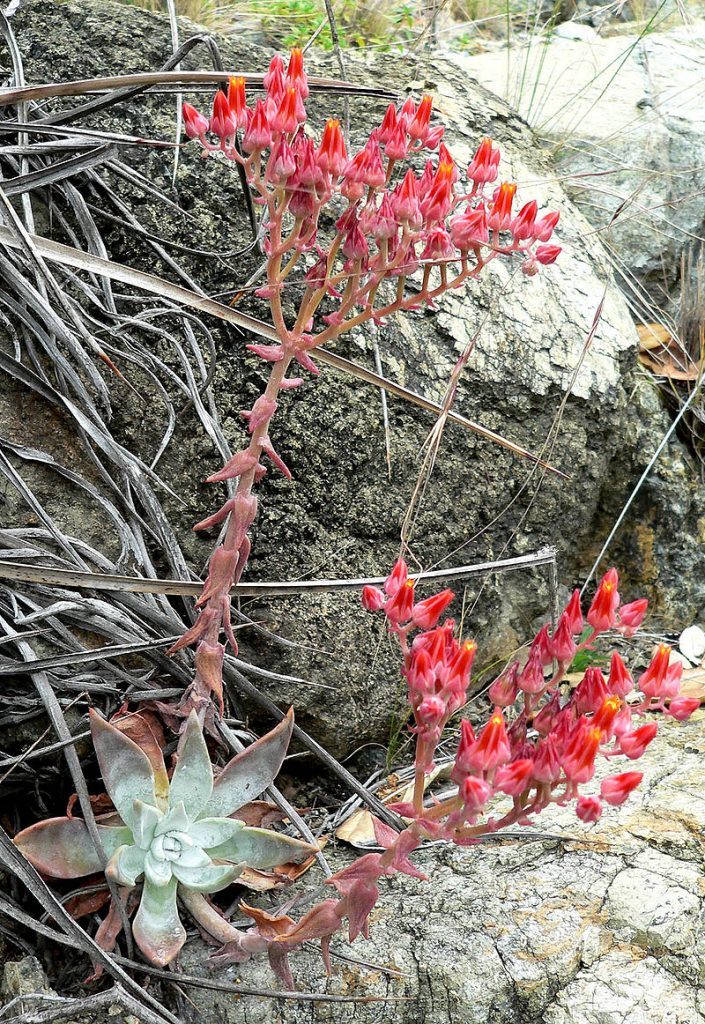
Native to rocky cliffs and steep slopes at low elevations in the mountains in southern Oregon and California, this evergreen succulent perennial is a member of the stonecrop family, Crassulaceae, that also includes sedum, jade plant, and hens and chicks. The plant grows 4-6″ tall and forms a rosette of flat, broadly lance-shaped, gray-green leaves that are 4-6″ across and may develop orange to red edges and tips in very dry weather. In mid spring to early summer, erect, orange-red stems emerge from the rosettes and produce clusters of small yellowish-red thimble-shaped flower that are attractive to butterflies and hummingbirds. Very drought tolerant, canyon liveforever is a good choice for a xeriscape and very attractive in rock gardens and containers. In addition, it serves as a larval host plant for the Sonoran blue butterfly. There are 7 subspecies that differ most significantly in their range. The plants are very long-lived, up to 50 years, indicated by the common name, liveforever. The genus name, Dudleya, honors William Russel Dudley (1849 – 1911), a botanist who taught at Cornell and Stanford. The specific epithet, cymosa, is the Latin word meaning full of shoots and refers to the inflorescence.
Type: Evergreen succulent perennial
Bloom: Clusters of small yellowish-red thimble-shaped flowers in mid spring to early summer.
Size: 4-6″ H x 4-6″ W
Light: Full sun to partial shade with afternoon shade in hot environments
Soil: Rocky to sandy, dry, well-drained; do not irrigate once established
Hardiness: Zones 6-10
Care: Low maintenance
Pests and Diseases: None of significance
Propagation: Seed (difficult), stem cuttings, division of offsets
Companion Plants: Sulfur buckwheat, California aster, wild strawberry
Outstanding Selections: None available
Photo Credit: Stan Shebs Wikimedia Commons